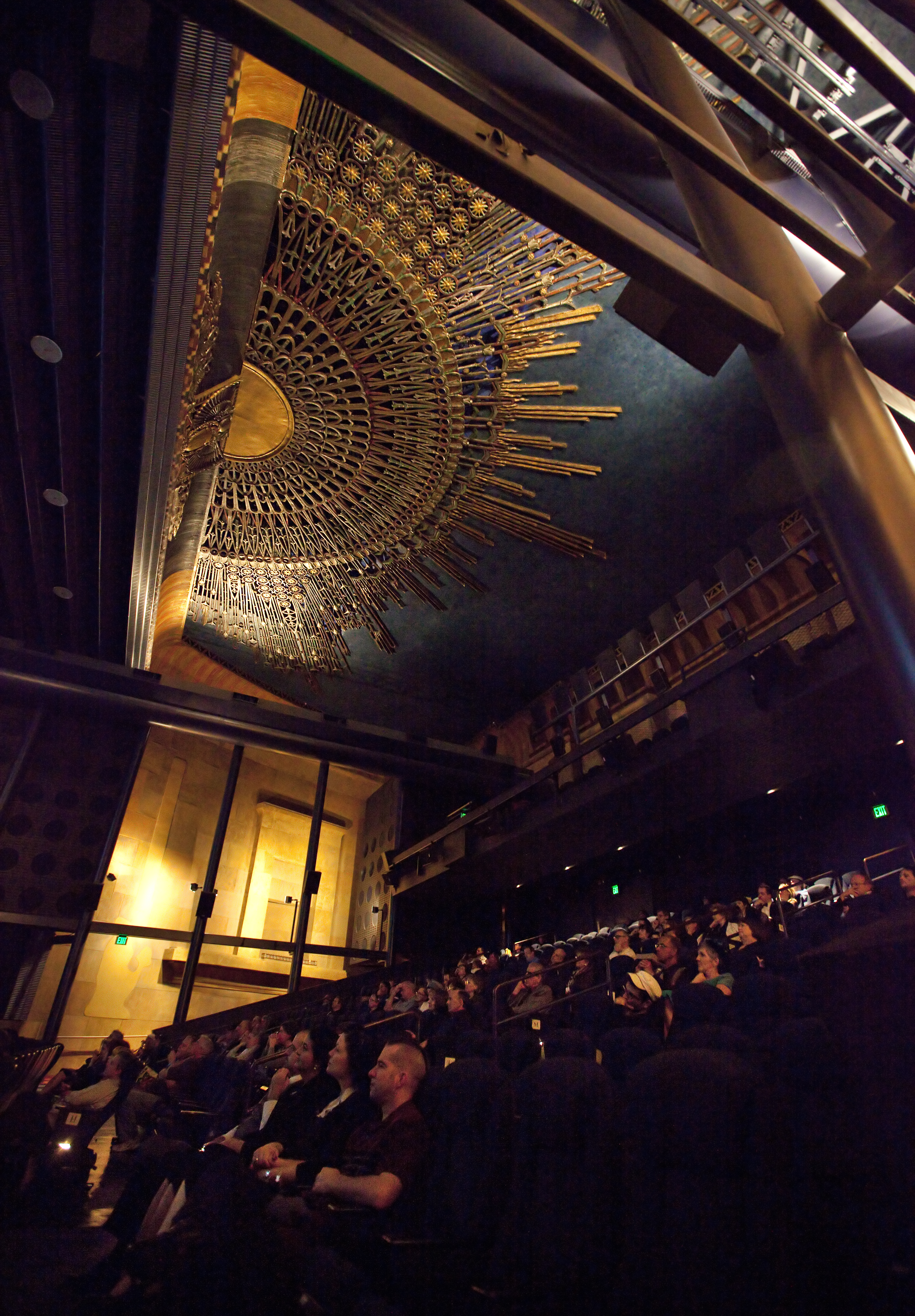Egyptian Theatre in Hollywood opens its doors for monthly tours

The Egyptian Theatre in Hollywood once held film premieres for exclusive audiences. Now the theater gives guests tours once a month. The next tour will be held Saturday.
EGYPTIAN THEATRE TOUR
Saturday
6712 Hollywood Blvd., $10
By marjorie yan
Feb. 11, 2011 10:28 a.m.

American Cinematheque bought the Egyptian Theatre in the mid-’90s for $1 from the City of Los Angeles. They have since completed a $15 million renovation, led by Craig Hodgetts, a professor of architecture and urban design.
Almost 90 years ago, the Egyptian Theatre on Hollywood Boulevard held the first ever Hollywood movie premiere. The film “Robin Hood” starred Douglas Fairbanks, a friend of theater founder Sid Grauman. Fairbanks premiered many of his films there, but only to an exclusive audience.
Today, anyone is allowed to take a tour through the historical landmark, which has a lobby that resembles a movie set and is lined with hieroglyphics. The tours are held once a month ““ the next one is scheduled for Saturday.
Several different companies have owned the theater throughout the years and put it through numerous construction projects, including a $15 million renovation in 1998 while under the ownership of American Cinematheque.
UCLA architecture and urban design Professor Craig Hodgetts, who designed UCLA’s temporary substitute for Powell Library, Towell, in 1992, was a major part of the Egyptian Theatre renovation. Hodgetts and HsinMing Fung, who make up the HplusF architectural team, worked alongside historians and preservationists to make sure the Egyptian Theatre kept its historical value while incorporating a 21st century look.
The theater renovations were necessary because of the conditions the theater was left in when American Cinematheque bought it. When United Artists attempted to get rid of the theater, the Los Angeles Community Redevelopment Agency took over ownership to prevent it from being destroyed. In the mid-’90s, American Cinematheque purchased the theater from the city for $1.
Aside from the reconstruction of the theater, the tours also focus on the building and its impact on the overall L.A. area since the theater’s prestigious opening, bringing more attention to Hollywood in the ’20s.
“If a film was showing here, it was not showing anywhere else in the L.A. area. On a premiere night, it was $5 to get in, and this was a time when a movie was 5 or 10 cents,” said Bill Kelly, the theater’s docent.
Still only about a quarter-mile away from the Chinese and El Capitan theaters, the Egyptian Theatre is built in an older style that is sometimes overlooked while strolling down Hollywood Boulevard. Visitors have the opportunity to learn about Grauman, the different parts of the theater’s history, and aspects that were preserved and parts that were changed.
“There was never any balcony,” Hodgetts said. “Our argument was that the balcony firstly gave really great views of the screen. It was a fantastic place to sit. It put you up close to what was the almost only thing that remained from the original theater, which was a spectacular ceiling.”
The modern-day Egyptian Theatre’s lobby is lined with palm trees that were added not only to serve as a place for movie-watchers to sit and hang out, but also to create a walkway for a red carpet during movie premieres.
“Palm trees represent Egypt and Los Angeles, which is one of the reasons why they got the OK for putting them in the courtyard,” Kelly said.
After the hour-long tour, visitors view a screening of “Forever Hollywood,” a story of Hollywood and how it manifested into the movie capital of the world.
“Forever Hollywood” focuses on how the Hollywood area was developed and how people tend to perceive it. The film includes a series of interviews done over a few months with actors and directors. Some of the most notable include Clint Eastwood, John Travolta, Samuel L. Jackson, Kevin Spacey and Steven Spielberg.
Peyton Hall, an architect and preservationist for The Egyptian, said that the theater has won local, statewide and national recognition, but that the project itself was an interesting case in which they had a mix of vintage and contemporary styles.
“There are not a lot of projects that are beloved or are considered architecturally successful that combine new design with old buildings,” Hall said.
While on the tour, visitors can explore the projector room where the movies are screened as well as into the singer’s box, still in its original condition, where performers got dressed and prepared.
“Anything that was there, that Peyton thought was a valuable piece of the history of the theater, we left, and there were very few of those,” Hodgetts said.
Peyton said that in terms of history, the theater is more important than many others because it was where the idea of Hollywood and movie premieres was born.
“Sid Grauman helped to develop the form of the theater for movies,” Hall said. “Things that we take for granted now, like the red carpet, the lights and the opening night, were for the most part invented by Sid Grauman, and it was invented here at the Egyptian Theatre.”

